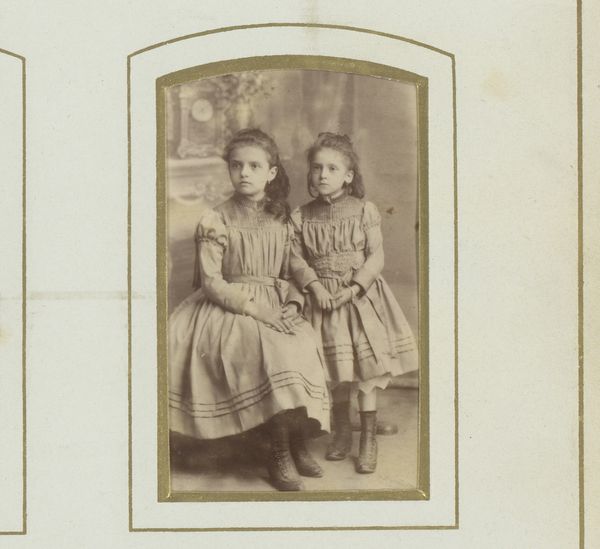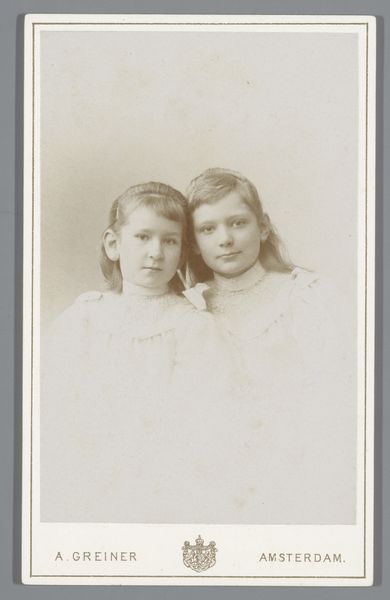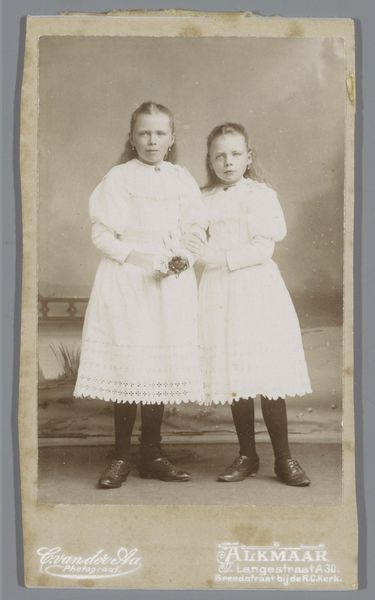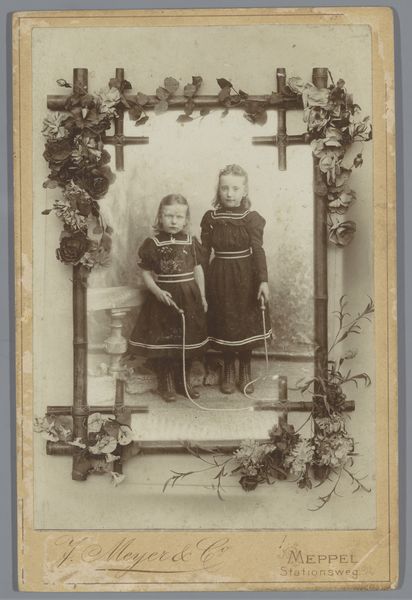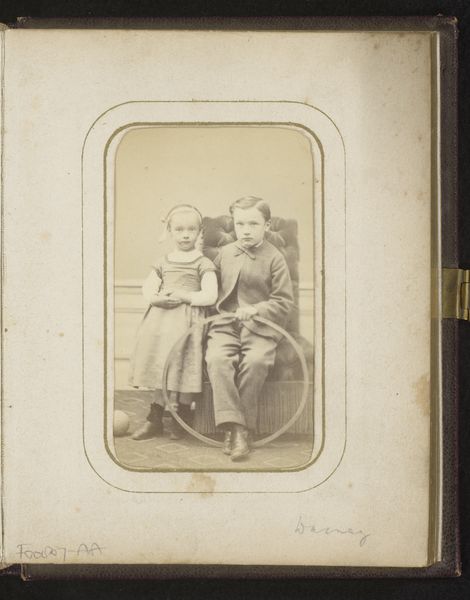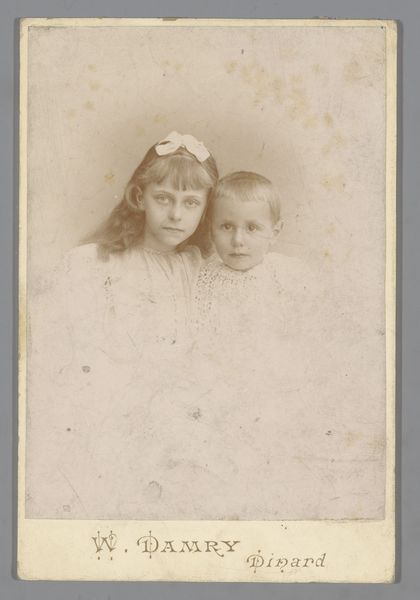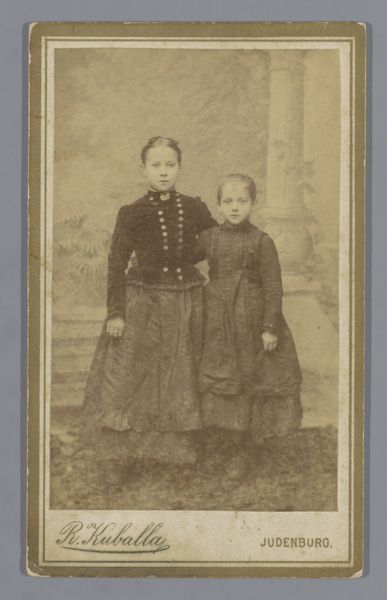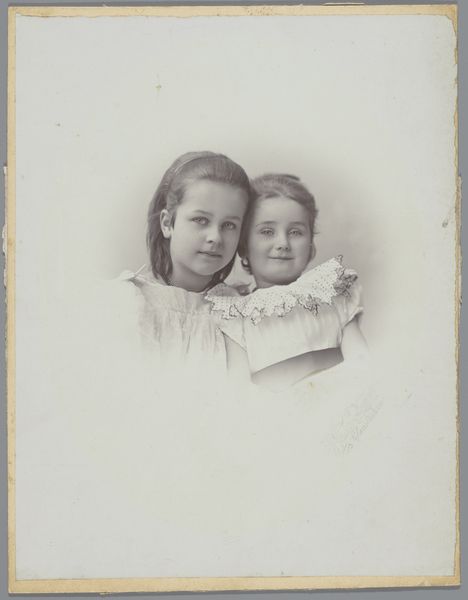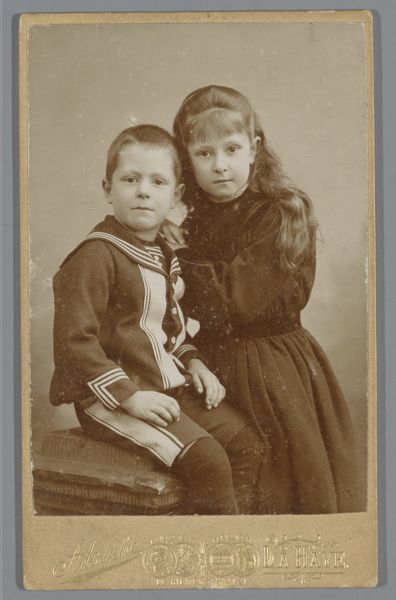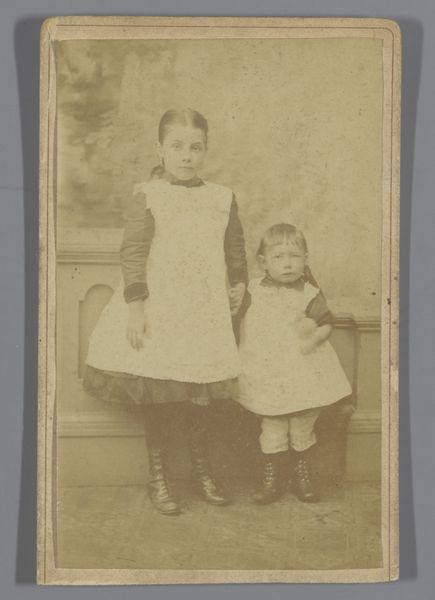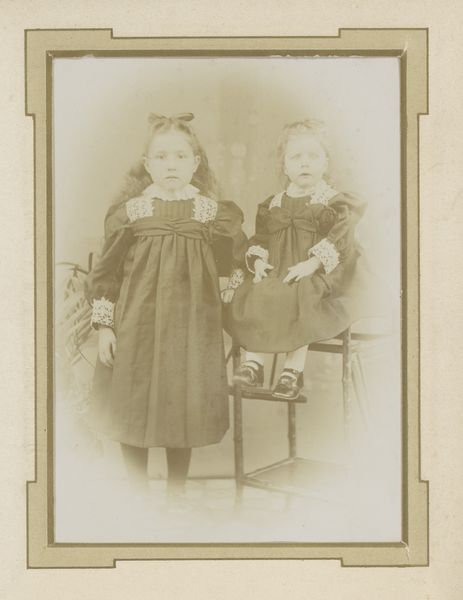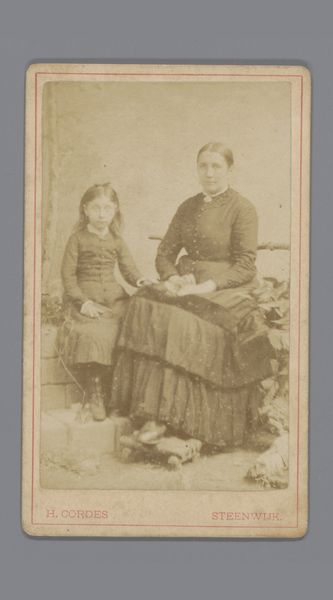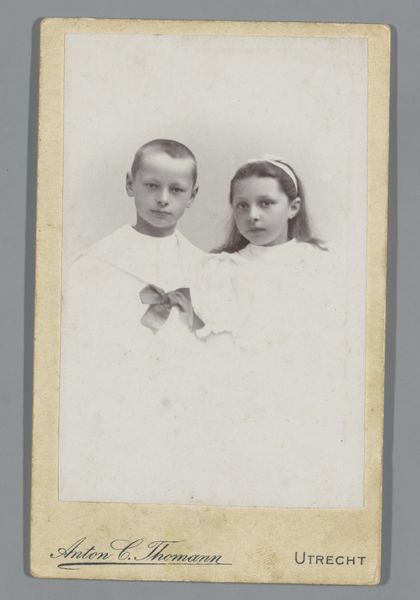
photography, gelatin-silver-print
#
photography
#
gelatin-silver-print
#
19th century
Dimensions: height 103 mm, width 63 mm
Copyright: Rijks Museum: Open Domain
Curator: Looking at this photograph, the warmth in the sepia tones immediately gives me a feeling of nostalgia and intimacy. Editor: This gelatin-silver print, titled "Portret van twee onbekende meisjes," and attributed to George Lodewijk Mulder, provides a compelling glimpse into the 19th century, dating sometime between 1859 and 1898. Curator: It is interesting that gelatin-silver printing was becoming popular then, opening photographic practice to wider audiences than earlier processes. Editor: Yes, that’s very pertinent. Photography's role in the visual representation and construction of identity, particularly for young women during this period, becomes clear. Note their dresses, for example. Mass-produced materials but carefully arranged for the public gaze. Curator: Precisely! The material reality speaks volumes. It would be interesting to know where Mulder’s studio sat in relation to the economic life of Utrecht. Were the clothes from there? It would be intriguing to assess what their outfits tell us about social status and expectations for women in that era, through their style, their labor? Editor: Absolutely. How does the democratization of photography challenge existing hierarchies? Did such representation amplify their societal roles? Looking at the piece from the gallery’s point of view, you realize how significantly it reorients what stories are preserved for us as a public and who can own representation, and its institutional afterlife in museum settings today. Curator: True. Perhaps we see an attempt to bridge the gap between private domestic life and the burgeoning public sphere through fashion and portraiture in visual culture. And thinking materially, each copy produced by Mulder would create an infinite dispersal, endlessly extending and reshaping their significance to a much wider community over time. Editor: Such perspectives prompt interesting research, to investigate how our collections affect public perception and understanding of historical gender roles. Food for thought! Curator: Definitely something for us to delve into and hopefully present in future exhibitions.
Comments
No comments
Be the first to comment and join the conversation on the ultimate creative platform.
